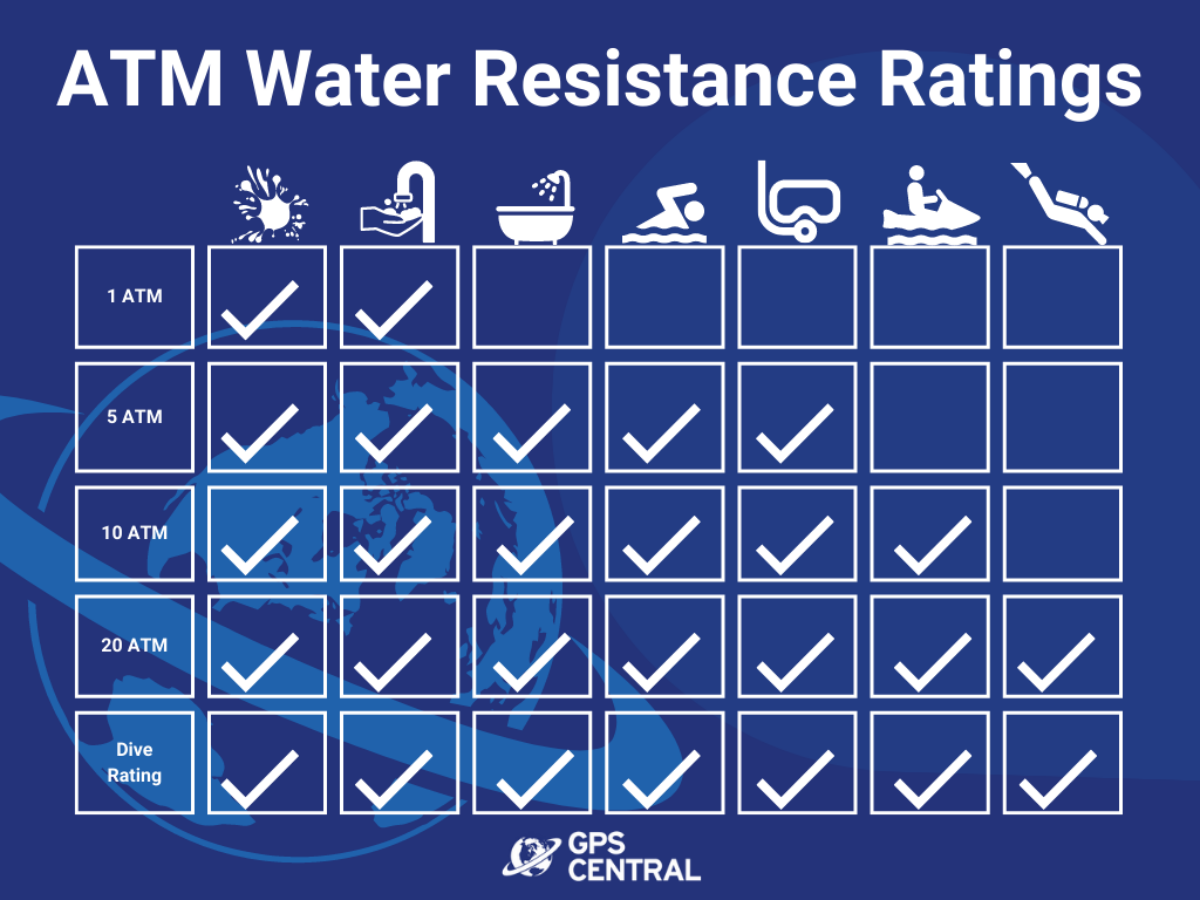Water Resistance Rating Guide
Wednesday, May 17, 2023 — 0 Comments
Water resistance is an essential feature for any electronic device and it’s important that you know the difference between waterproof, water resistant, and other water ratings so you can purchase the right product for your needs. Understanding the water ratings is crucial to ensure that the device does not get damaged when exposed to water. Here is a breakdown of water ratings.
Water Rating: IPX
The number following the “X” in IPX refers to the water resistance rating, with higher numbers indicating greater water resistance.
The “X” in IPX stands for “unrated” or “not tested,” indicating that the device has not been tested or rated for dust resistance. The letters in the IP rating system stand for “Ingress Protection,” which refers to the degree of protection a device has against the intrusion of solid objects (such as dust) and water. An IP rating is common with Outdoor and Handheld GPS Units.
It’s important to note that the IPX rating system applies only to water resistance and not to dust resistance. If you need a device that is both dust and water-resistant, look for a device with an IP rating, such as IP65 or IP67.
Water Rating: IP65
IP65 is a rating that indicates a device’s level of dust and water resistance. The “6” rating means that the device is dust-tight, while the “5” rating means that the device can withstand low-pressure water jets from any direction. Specifically, it can withstand water projected at all angles through a 6.3 mm nozzle at a flow rate of 12.5 liters per minute, at a pressure of 30 kN/m2, for 3 minutes, and at a distance of 3 meters.
Water Rating: IP67
IP67 is a rating that refers to dust and water resistance. The 6 rating denotes that the device is dust-tight, and the 7 rating means that the device can be immersed in water up to 1 meter deep for 30 minutes.
Water Rating: IPX6
IPX6 is a rating that refers to water resistance. The X in the rating means that there is no dust rating. The 6 rating means that the device can withstand high-pressure water jets from any direction. Specifically, it can withstand water projected at all angles through a 12.5 mm nozzle at a flow rate of 100 liters per minute, at a pressure of 100 kN/m2, for 3 minutes, and at a distance of 3 meters.
Water Rating: IPX7
IPX7 is a rating that refers to water resistance. The X in the rating means that there is no dust rating. The 7 rating means that the device can be immersed in water up to 1 meter deep for 30 minutes.
Water Rating: IPX8
IPX8 is a rating that refers to water resistance. The X in the rating means that there is no dust rating. The 8 rating means that the device can withstand continuous immersion in water deeper than 1 meter.
Atmospheric Pressure Ratings: ATM

ATM stands for “atmosphere” and is used to measure pressure. One ATM is equivalent to 14.7 pounds per square inch (psi). In the context of water ratings, ATM refers to the amount of pressure that a device can withstand when submerged in water. One ATM equals a water pressure depth of 10 meters (33 feet).
1 ATM
Devices with a 1 ATM water rating are splash resistant, meaning they can withstand light splashes of water, such as rain, snow, splashes or handwashing, but should not be immersed in water.
5 ATM
Most intermediate running watches have a water resistance rating of 5 ATM, which means they can withstand pressure equivalent to 50 meters (165 feet) of water. This rating is suitable for swimming, snorkeling, and other water-related activities that do not involve high-speed water sports.
10 ATM
A device with a 10 ATM water rating can withstand pressure equivalent to 100 meters (330 feet) of water. This rating is suitable for swimming, snorkeling, and high-speed water sports such as water skiing and jet skiing.
20 ATM
A device with a 20 ATM water rating can withstand pressure equivalent to 200 meters (660 feet) of water. This rating is suitable for professional divers and extreme water sports enthusiasts.
Dive Ratings
The Dive rating is suitable for professional divers, high-speed water sports enthusiasts, and extreme water sports enthusiasts who dive to depths of over 100 meters. It has been tested for dive compliance according to engineering standard EN13319.
It’s important that you check the diving ratings of dive watches to ensure they’re going to withstand the pressure of your dives.
Understanding the water ratings of your Garmin GPS devices is crucial to ensure they do not get damaged when exposed to water. When purchasing an electronic device, it is essential to consider its water rating to ensure it suits your needs.

